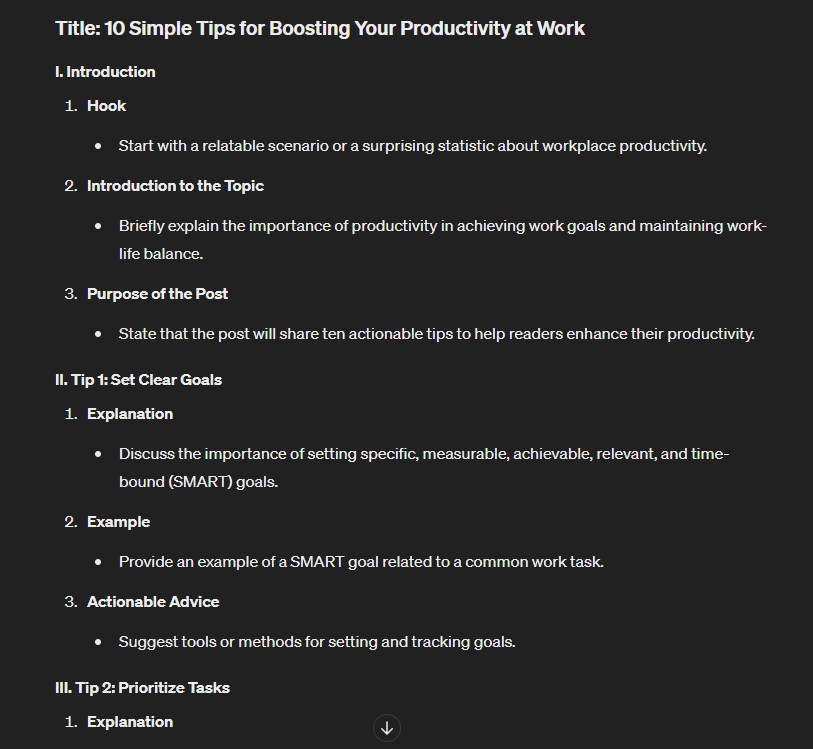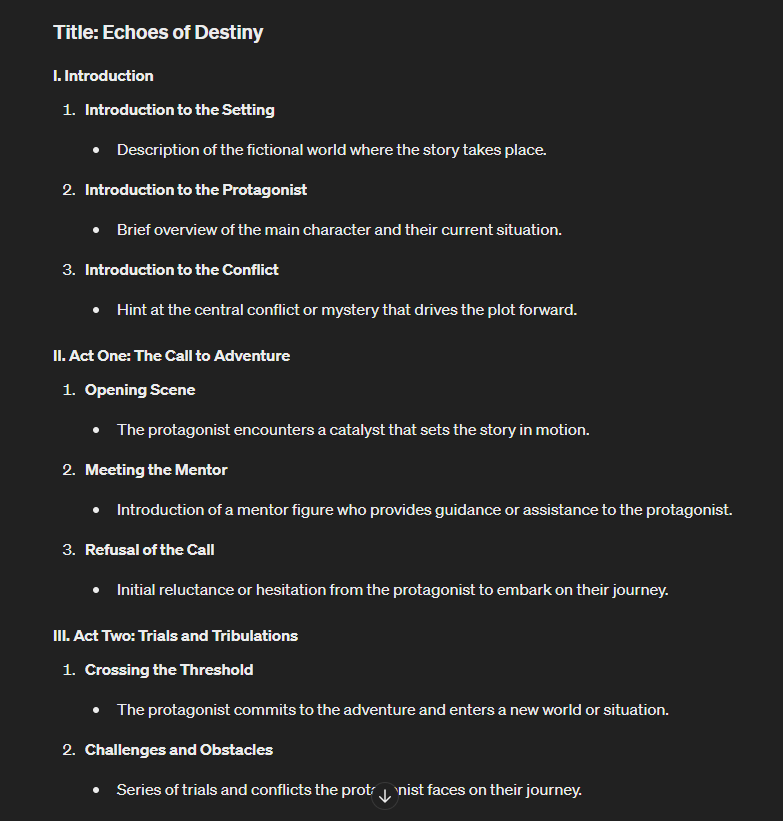Have you ever stared at a blank page, wondering where to start? An outline might just be what you need.
What is an outline in writing?
Think of it as a roadmap guiding you through your thoughts. No more getting lost mid-way or missing key points.
An outline isn’t just some academic chore; it’s the secret sauce behind organized, compelling content that grabs readers’ attention.
Whether you’re drafting a research paper or planning out your next blog post, learning how to write an outline can elevate your work from chaotic to clear-cut brilliance.
Table Of Contents:
What is an Outline in Writing?
An outline organizes your thoughts, main points, and supporting details before you start writing. Think of it as the blueprint for your blog post, essay, term paper, or book.
The purpose of an outline is to organize written ideas about a topic into a logical order. It helps establish a structure for a paper and demonstrates the main argument, main points, and main pieces of evidence before writing.
Outlining is a crucial part of the writing process that can save you time and frustration later on.
Benefits of Outlining
A research paper outline offers several benefits such as helping you organize your thoughts, building your story structure, keeping you on topic, and serving as a blueprint for your paper.
When I first started writing, I thought outlining was a waste of time. I just wanted to dive in and start writing.
But as I took on bigger writing projects, I realized that outlining is one of the most important prewriting techniques. It helps me organize my thoughts, stay focused on my topic sentence, and write more efficiently.
Types of Outlines
There are different types of outlines you can use depending on your writing project and personal preference.
Let’s take a look at some of the most common ones.
Topic Outlines
Topic outlines present the main points of a paper as single words or short phrases. They provide a quick overview of the main ideas and the planned order in which they will be presented.
Sentence Outlines
Sentence outlines go into more detail than topic outlines. They include full topic sentences for each main point, subpoint, and supporting detail.
This type of outline can help ensure that each point is fully developed before writing begins.
Formal Outlines
Formal outlines follow a specific format example with Roman numerals, capital letters, Arabic numerals, and lowercase letters to designate the level of importance for each point.
They are often required by instructors and tend to be more detailed than informal outlines.
Informal Outlines
Informal outlines are less rigid in outline format and may use bullet points, dashes, or other symbols to organize ideas. They can be as simple or as detailed as you need, making them a more flexible option for organizing thoughts.
Personally, I prefer using a combination of topic and sentence outlines. I start with a topic outline to get a bird’s eye view of my main points. Then, I flesh it out into a sentence outline to make sure each point is fully developed before I start writing.
When to Use Writing Outlines
Outlines are incredibly versatile tools that can be used for all kinds of writing projects. Here are a few ways how you can use outlines to improve your writing.
I have also included samples created by ChatGPT for each type of outline.
Academic Papers
If you’re writing a research paper, a good outline can help you stay organized and focused.
Start by outlining your introduction, thesis statement, and main points. Then, fill in your supporting details and evidence.
Be sure to include your sources and citations in your outline to save time later on.

Essays
Whether you’re writing a persuasive, narrative, or expository essay, an outline can help you organize your thoughts and arguments.
Start with your essay outline including your introduction, thesis statement, and main points. Then, add in your supporting details and evidence.

Blog Posts and Articles
If you’re writing a blog post or article, an outline can help you stay on topic and ensure your writing is clear and concise.
Start with your headline and introduction, then outline your main points and supporting details. Be sure to include any research or examples you want to include.

Check out this comprehensive guide on how to write an SEO-friendly blog post outline.
Books
Outlining is essential for writing a book or novel. A good book outline can help you keep track of your plot, characters, and themes.
Start by outlining your main plot points, then add in your character arcs and subplots.
Be sure to include any research or world-building details you need.

I’ve used outlines for all kinds of writing projects, from blog posts to books. I find that having a clear outline helps me stay focused and avoid writer’s block. It also makes the editing process much easier, since I can see the overall structure of my piece and make changes as needed.
Proper Outline Structure and Format
A well-structured outline can make the writing process much smoother. Here are the key components to include in your outline format.
Introduction and Thesis Statement
Start your outline with your introduction and thesis statement. This will help you stay focused on your main point throughout the writing process.
Body Paragraphs
Next, outline your body paragraphs. Each paragraph should focus on one main point or idea, with supporting details and evidence.
Use your major points as headings and your minor points as subheadings or bullet points.
Conclusion
Finally, outline your conclusion. This should tie back to your thesis statement and summarize your main points.
You can also include a call-to-action or final thought.
How to Create an Outline
Now that you know the different types of outlines, let’s dive into how to actually create one.
Here’s a step-by-step guide to help you get started.
Step 1: Brainstorm Ideas
The first step in creating an outline is to brainstorm ideas related to your topic. This can involve listing key points, making a mind map, or using other prewriting techniques to generate content and identify connections between ideas.
Step 2: Organize Your Main Points
Once you have your ideas, it’s time to organize topics into main points that support your thesis or central argument.
These main points will form the backbone of your outline and help you stay on track as you start writing.
Step 3: Arrange Supporting Details
Under each main point, arrange your supporting details and evidence. These might include quotes, examples, statistics, or anecdotes that back up your main points.
Be sure to keep them organized and relevant to each main idea.
Step 4: Finalize The Outline Structure
Once you have your main points and supporting details in place, it’s time to finalize the structure of your outline. This means deciding on the order of your points, making sure each point flows logically into the next, and adjusting your outline structure as needed.
When I plan an outline for a book or long-form blog post, I like to start with a basic structure and then add more detail as I go. I might start with just my main points and then fill in supporting details and evidence later on.
The key is to stay flexible and adapt your outline as your writing evolves.
Tips for Effective Outlining
Outlining is a skill that takes practice to master. Here are a few tips to help you create effective outlines for any writing project.
Focus on the Main Idea
When outlining, focus on your main ideas and points. Don’t get bogged down in minor details or tangents. Stick to the key information that supports your thesis or argument.
Use a Consistent Format
When formatting your outline, use a consistent numbering system or order. For example, you might use Roman numerals for main points, capital letters for subpoints, and numbers for supporting details.
Be sure to indent each level for clarity.
I like to keep my outlines simple and easy to read. I use bullet points for main ideas and supporting details, and I indent each level to show the hierarchy of information.
I also leave plenty of white space so I can jot down notes or make changes as I go.
Be Flexible and Adaptable
Your outline is a guide, not a rigid set of rules. Be willing to adapt and change your outline as you write and revise.
If you find that a certain section isn’t working or that you need to add new information, don’t be afraid to make changes to your outline.
Revise and Refine
Once you have a draft of your outline, take some time to revise and refine it. Look for areas where you can add more detail or clarify your points. Make sure each section flows logically into the next and that your overall structure makes sense.
One tip that has helped me create more effective outlines is to start with a basic structure and then add more detail as I go. For example, I might start with just my main points and then fill in subpoints and supporting details later on. This allows me to focus on the big picture before getting bogged down in the details.
Another tip is to use my outline as a tool for plot clarity and character growth when book outlining. I make sure each scene and chapter has a clear purpose that ties back to my overall content strategy and message.
Turn Your Ideas Into Structured Pieces That Engage and Inform
I hope this guide has helped you understand what is an outline in writing and how to create one for your next content piece.
Remember, outlining is a powerful tool that can save you time and frustration in the long run. So next time you sit down to write, take a few minutes to create an outline first and watch how it reshapes your entire approach to crafting meaningful content.
Stay one step ahead with WorkMind’s blogs, crafted to deliver real results for students and professionals. See what we have in store for you.